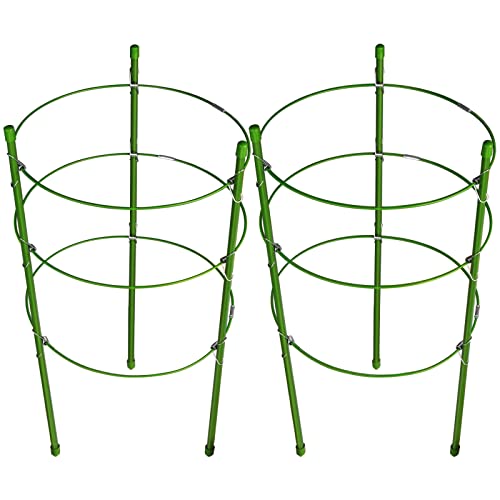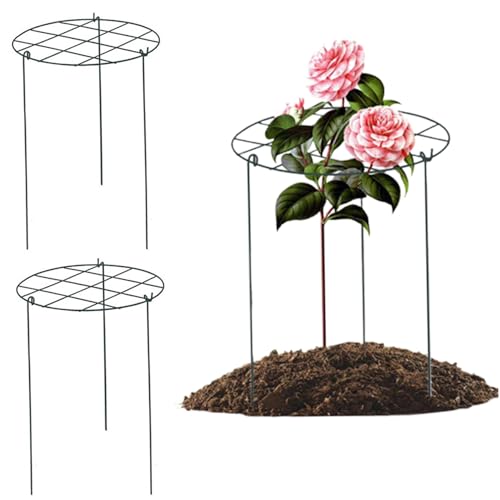How to support peonies – and stop these glorious garden blooms from flopping over
Discover 7 innovative and expert ways to support your peony plants and prevent these stars of the garden from falling
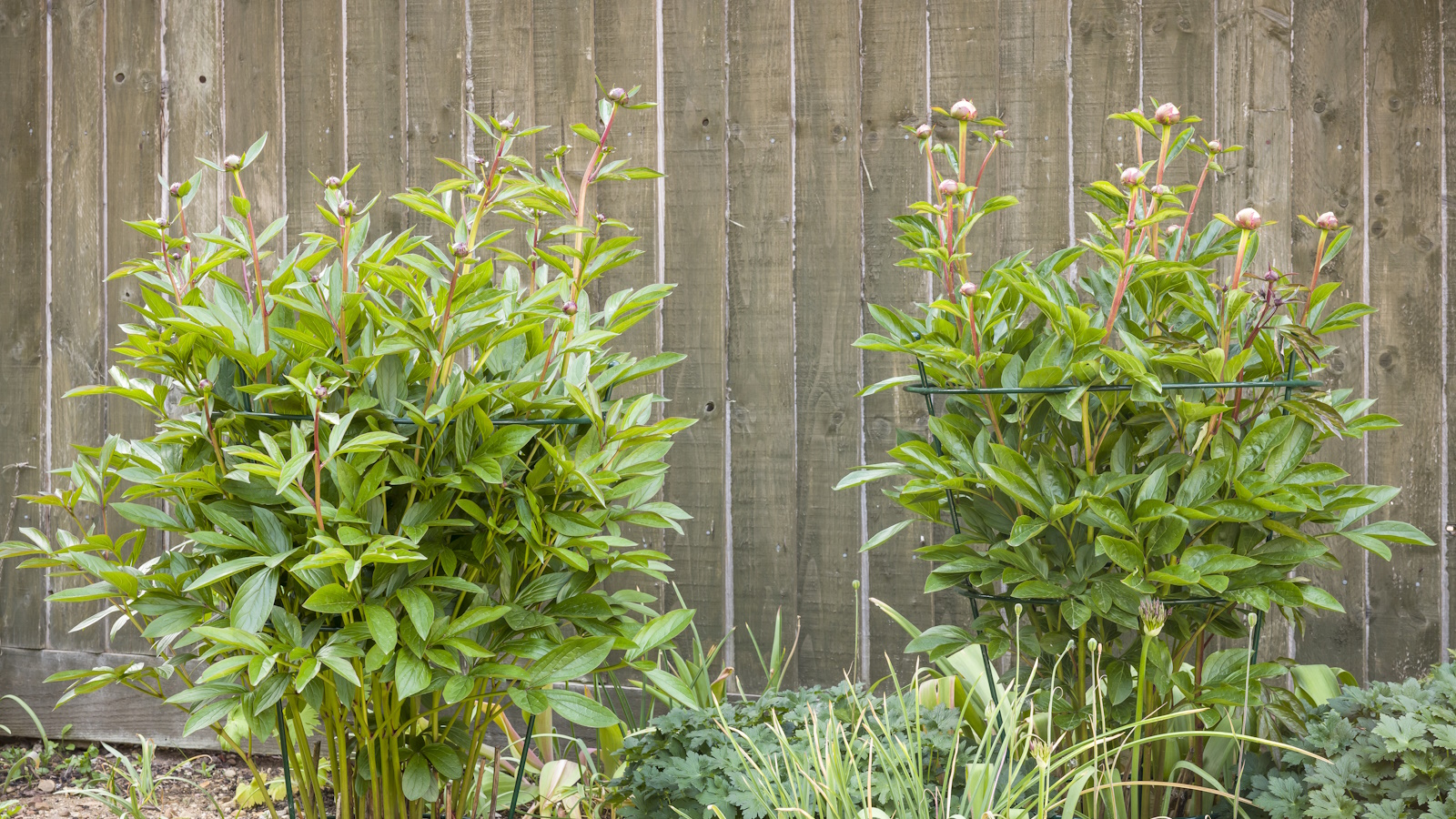

They are a heavenly yet fleeting sight in the garden, and one we anticipate for months. If you love peonies as much as I do, you will want to encourage their blooms to radiate through the garden for as long as possible.
Herbaceous peonies can grow to be very large shrubs, and when in full bloom often succumb to falling over owing to the weight of their huge heads. I see it all too often in front yards - glorious peony plants covered in tight buds and full of promise, only to bloom then flop and lose all their petals during a heavy shower; their floral show cut short for the season.
I have grown peonies for many years, both in my cut flower beds and in containers, and once these plants get to a certain size, they need protecting from pests and problems. I know how important it is to ensure they are adequately supported and protected from adverse wind and rain when they begin to bloom. Here, I share everything I’ve learned about how to support peonies, and the best tools for the job.
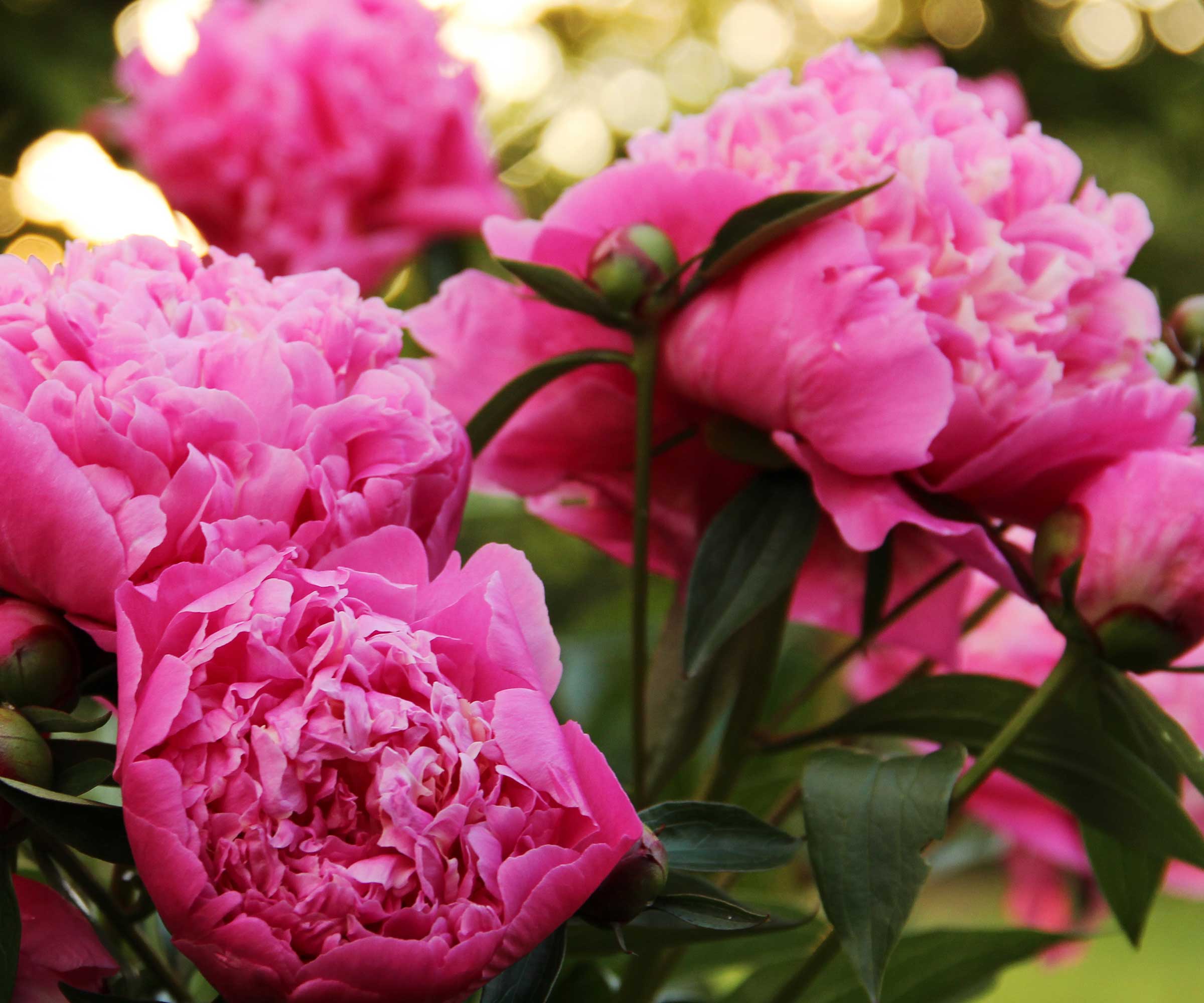
How to support peonies: 7 expert ways to stop them from flopping
It’s useful to think about peony supports before your plants go in or begin to grow again. Take care not to damage the stems or the crown, and also ensure they are not bound too tightly, as they will require room to grow and airflow between the stems and heads.
Even if you’ve never added peony supports before, or your plants are already fully grown, there will be a method below that suits your yard and the way you like to garden.
Create support using a peony cage
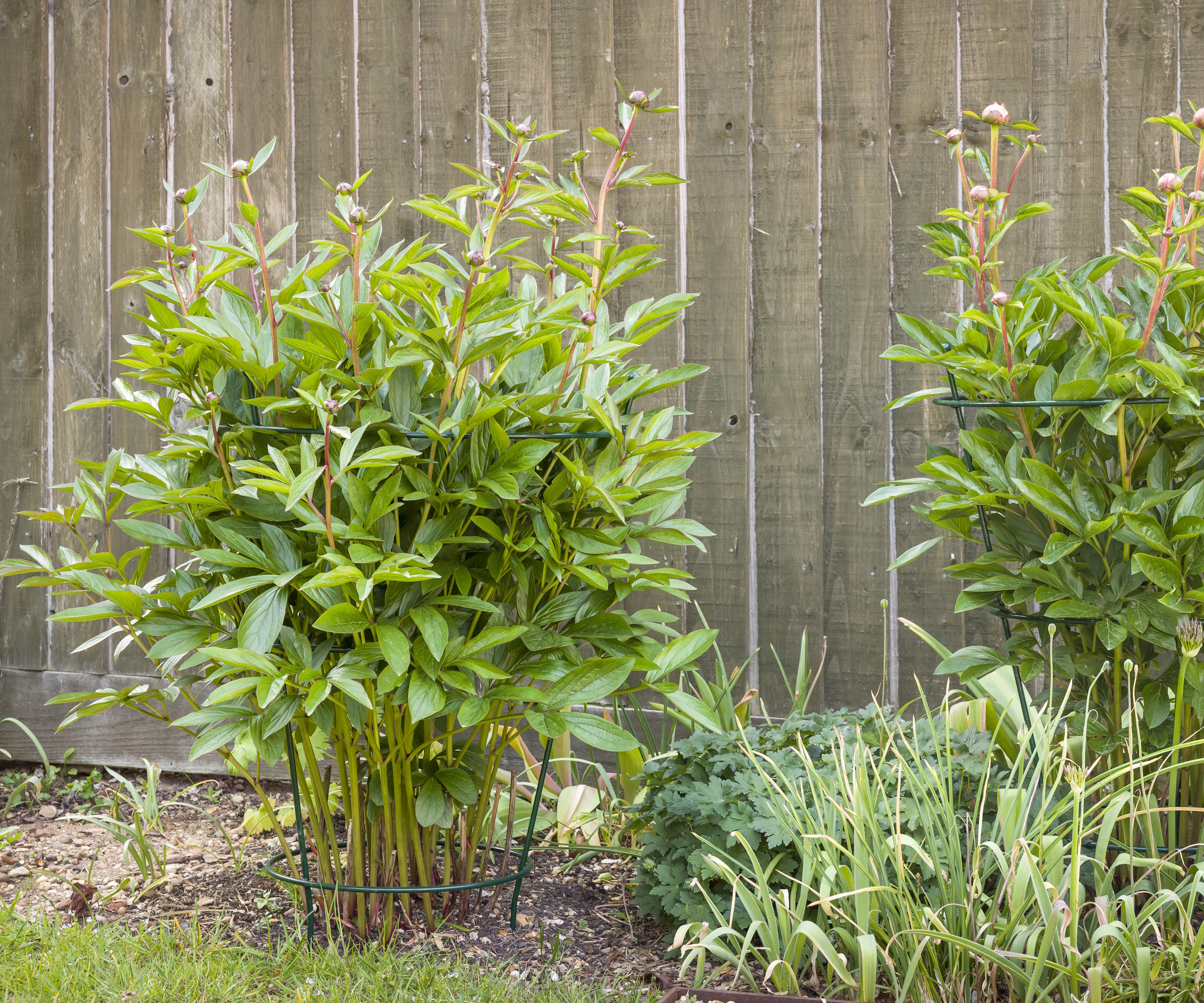
These pieces of garden kit are genius. I wouldn't be without my peony cages for the larger of my herbaceous shrubs. There are different models to choose from, but all have the same effect.
The metal cages are on long legs and usually come in two parts, which are hooked together once in the ground to create a simple, strong frame to support your peony stems and stop them from falling sideways. A great feature of this kind of design is that you can easily hook together more than two semi-circular frames if you have a larger plant to support. You can simply place them around the shrub and hook as you go to create a larger-sized frame.
You can also use these frames to support tomato plants, roses, and even large indoor plants, so once peony season is over these cage supports will still come in very handy.
In my experience, they usually become invisible once my plants have grown to size. They are made from metal, however, so if you want a more natural, rustic look, another one of these ideas below might be better suited to you.
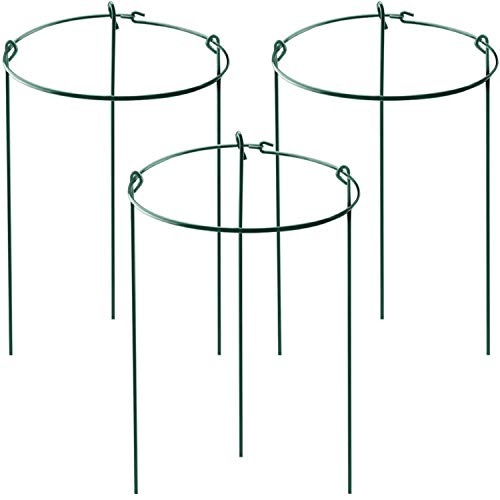
This peony support cage is a simple system to set up, and will prove to be a versatile piece of gardening kit that can support lots of other plants.
Give each stem an individual support using stakes
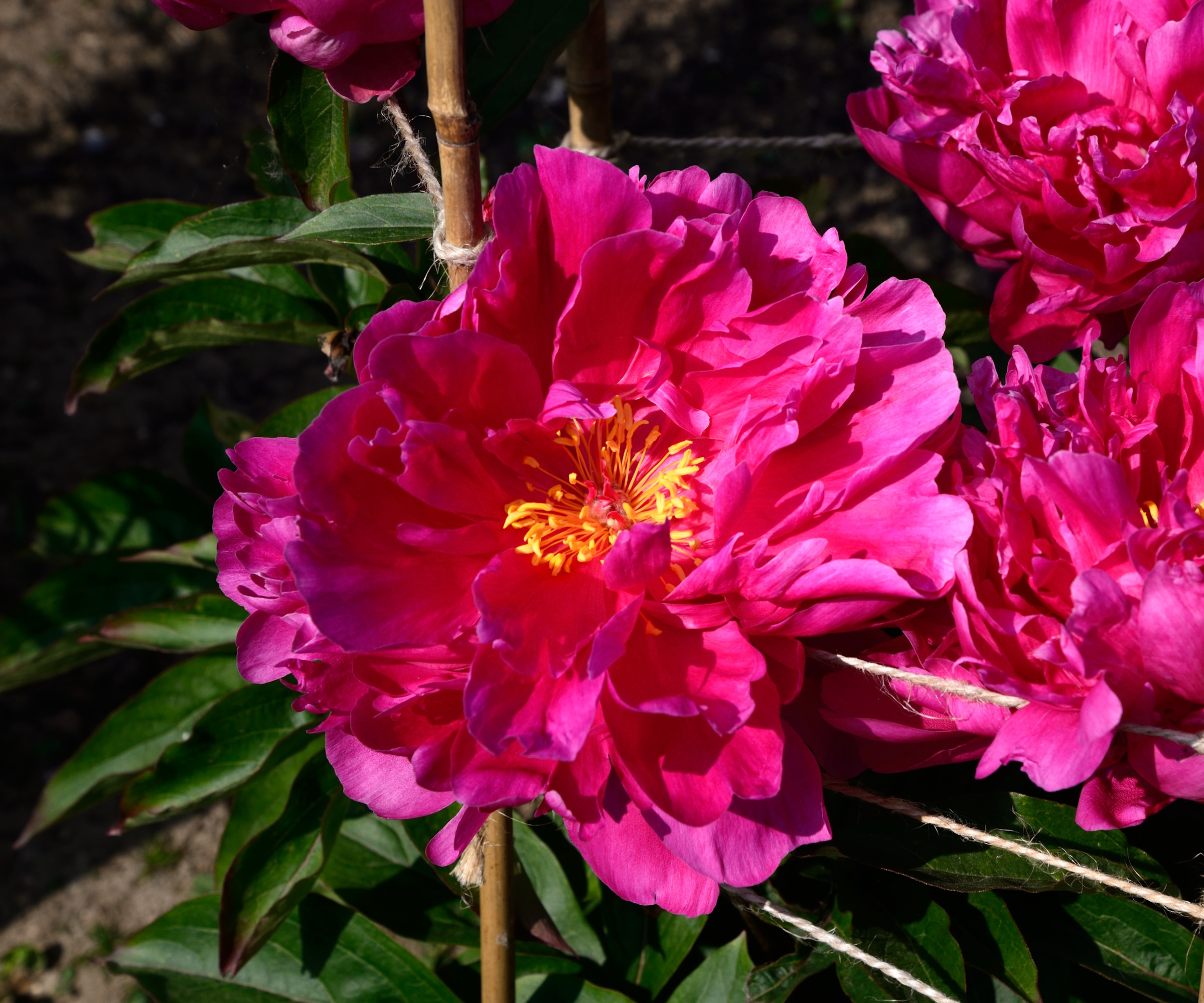
If you have peonies with particularly large and heavy heads, you might want to stake each of them individually. This may also be a useful technique if your plants have already succumbed to adverse weather and are looking very floppy.
Simply take wooded garden stakes - these bamboo canes from Amazon are ideal - or thin branches you have previously cut from the garden. Place them an inch from the base of each stem and secure in place using garden twine, like this natural jute twine from Walmart. I usually tie in two places, one towards the base of the stem and another higher up. Leave a little room for the stem to grow, and take care not to crush any foliage. This method also works very well if you're growing peonies in containers.
I use natural twine over plastic ties with my plants because it is softer on the stems, is biodegradable, and can easily be reused in the future.
Encase peonies in a natural cage made from canes
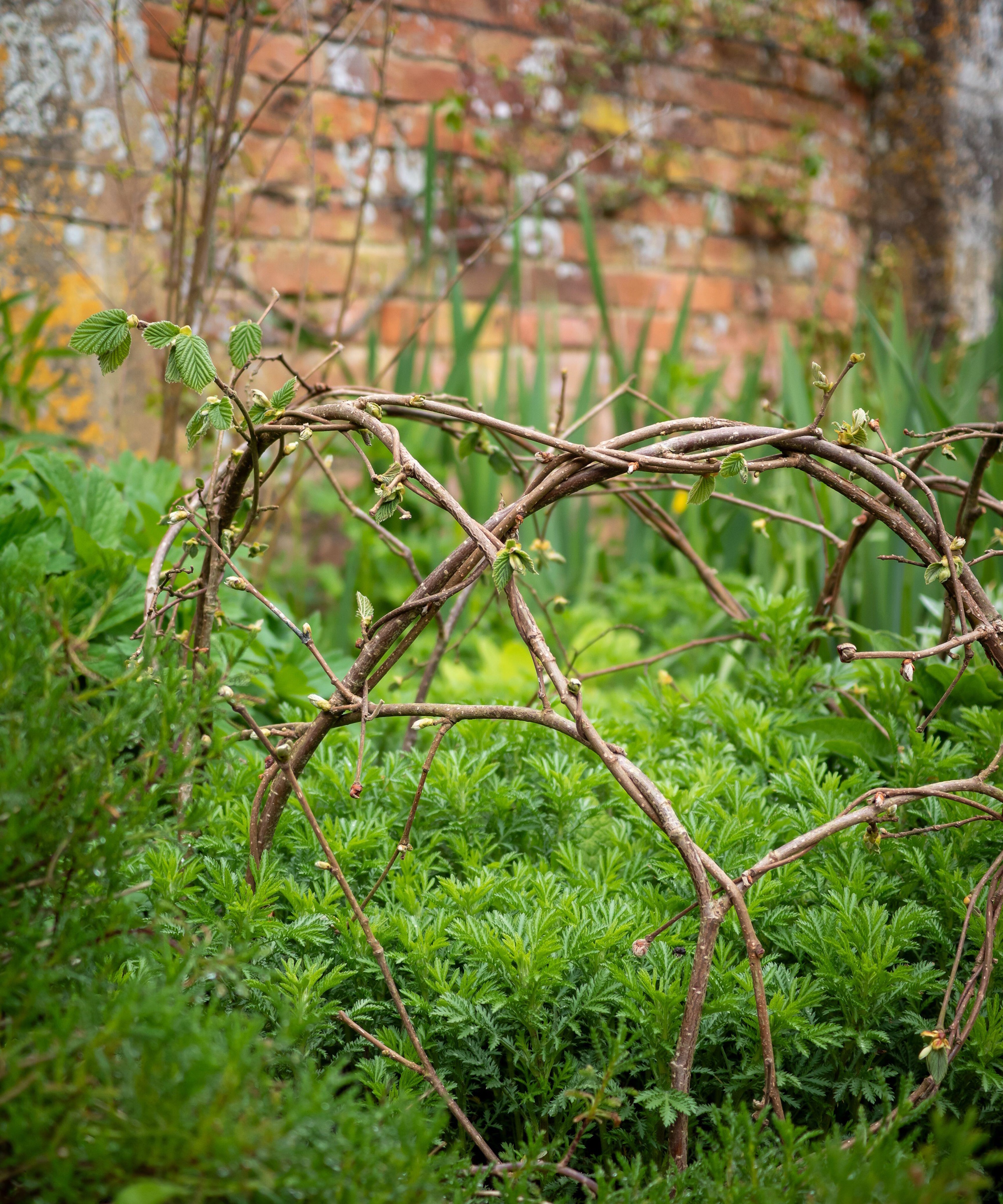
If you love the natural look, you can create your own plant cage using canes cut from your own garden. Hazel, dogwood or willow would work very well, as these woods are durable and flexible.
The idea is to cross them over, placing each end securely into the ground to create a natural cage support. You can weave them through each other, or add a few ties using jute twine to hold it in place.
Add several taller branches at the top to give height to the cage and allow it to support your peonies as they get bigger.
Corral peonies using twine and stakes

If you have very large peony shrubs that haven't grown up through a support cage, a quick and inexpensive fix is to corral the entire plant using canes or metal rods and several rows of jute twine or thin garden netting to encase your peonies securely.
Simply place your canes or rods around the perimeter of the plant, and then surround the stems with two or three rows of twine. You could also use velcro plant tape, available from Amazon for the job.
Add a plant grid
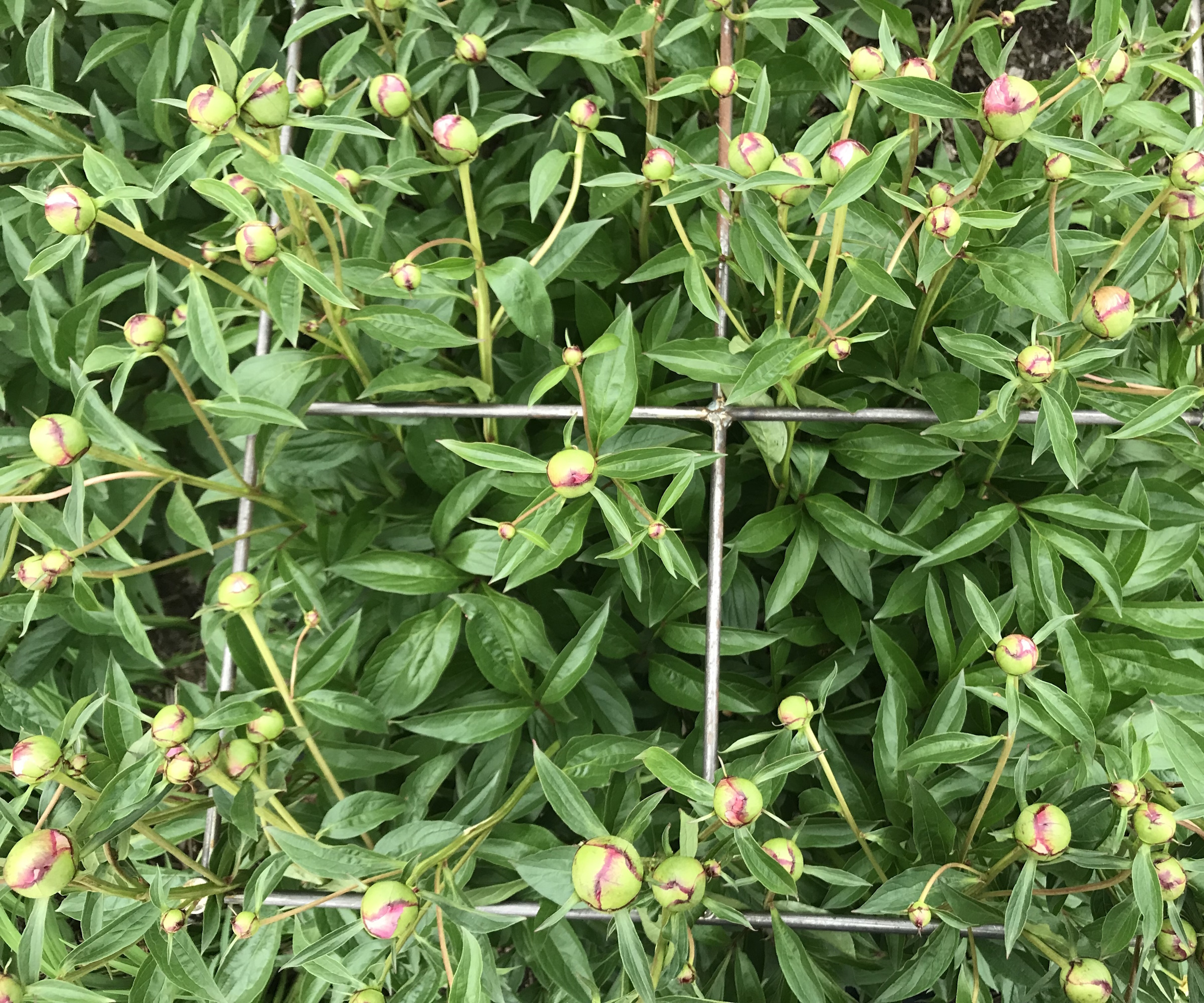
Another way I sometimes see peonies growing is through a metal grid. I see flower farmers using this technique more often, when growing on a larger scale. It works really well, but isn't the prettiest option for your own backyard.
You can get smaller grow-through hoops, such as this one from Amazon, and much larger geometric grids. These are placed on stakes over young plants, to allow the peonies to grow through the grid. Once they are mature, the grids become hard to see, but they are pretty visible otherwise.
You can create a version of this with netting too, using trellis netting, such as this from Amazon. It's a cheaper option, and the netting would certainly come in useful for many other plants, especially if you grow vegetables.
Use metal coat hangers for a DIY fix
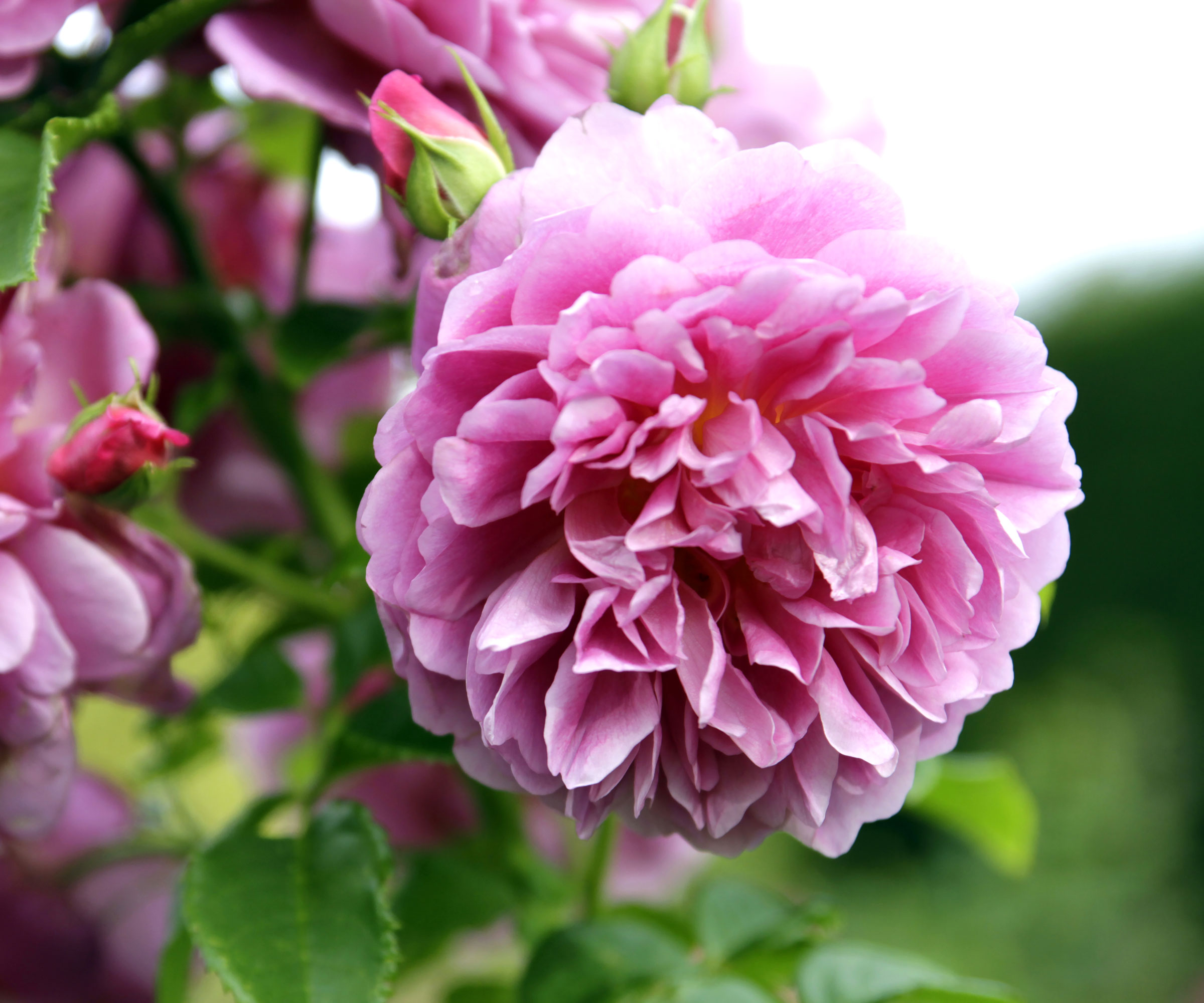
For a cheap and cheerful DIY fix, you can take two metal coat hangers from the closet - the kind you often get when you pick up your clothes from the drycleaners.
Open them up and bend the tips so that you have a little hook on each end. Then all you do is wrap the coat hanger wire around the entire plant and secure by hooking the ends together.
Coat hanger wire is super strong and durable enough to support heavy plants, with the added bonus of being a free option.
Find a plant collar to support your plants

It might seem like a more drastic option, but by encasing your entire peony shrub in a protective grid or collar is a fail safe way to prevent it from falling over.
You can create your own, bespoke sized cage using a set like this from Walmart, with wire mesh and cable ties. It would definitely support your plants, but is a more obvious, and less natural choice for your backyard.
The right peony care is vital to getting the absolute most out of these bombastic blooms. You can discover how to fertilize peonies and how to avoid these peony pruning mistakes in our guides to guarantee amazing blooms every year.
Sign up to the Homes & Gardens newsletter
Design expertise in your inbox – from inspiring decorating ideas and beautiful celebrity homes to practical gardening advice and shopping round-ups.

Rachel is a gardening writer, flower grower and floral designer. Her writing career began on Country Living magazine, sparking a love of container gardening and wild planting. After more than a decade writing for and editing a range of consumer, business and special interest titles, Rachel became editor of floral art magazine The Flower Arranger. She then worked as a floral designer and stylist for six years, before joining Homes & Gardens. An expert in cut flowers, she is particularly interested in sustainable gardening methods and growing flowers and herbs for wellbeing. In summer 2024, she was invited to Singapore to learn about the nation state's ambitious plan to create a city in nature, discovering a world of tropical planting and visionary urban horticulture.
-
 5 surprising but brilliant ways to clean with old socks – from perfectly buffing stainless steel to deterring pests naturally and more
5 surprising but brilliant ways to clean with old socks – from perfectly buffing stainless steel to deterring pests naturally and moreTackle dust in tricky corners, clean your mirrors and even banish bad odors with those rogue single socks
By Andy van Terheyden Published
-
 How to grow astilbe – expert advice on cultivating this shade-tolerant flowering perennial
How to grow astilbe – expert advice on cultivating this shade-tolerant flowering perennialShade-tolerant and pest-resistant - astilbe are hardy and tough perennials that can thrive in many settings
By Ellen Wells Published
